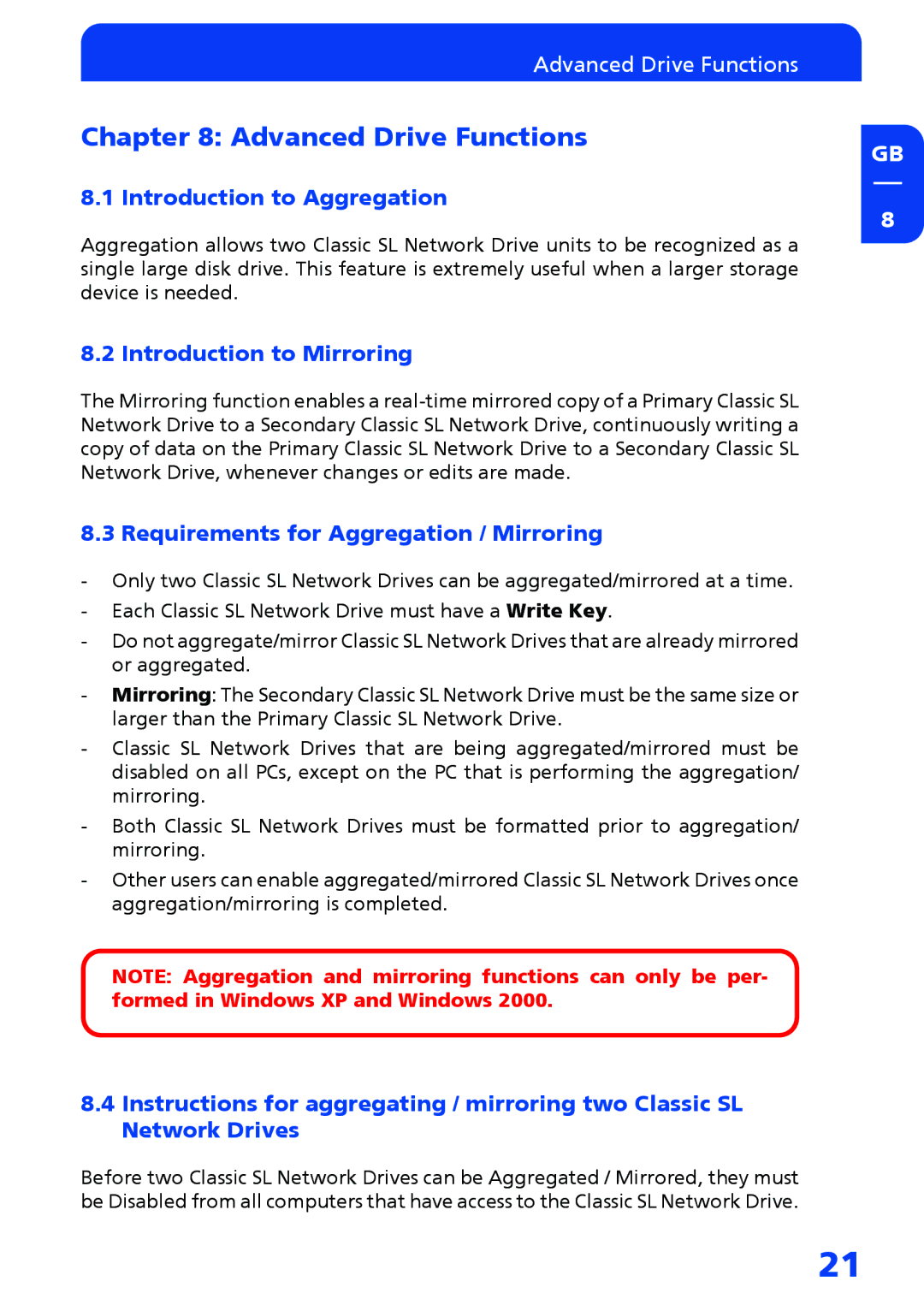
Advanced Drive Functions
Chapter 8: Advanced Drive Functions
8.1 Introduction to Aggregation
Aggregation allows two Classic SL Network Drive units to be recognized as a single large disk drive. This feature is extremely useful when a larger storage device is needed.
8.2 Introduction to Mirroring
The Mirroring function enables a
8.3 Requirements for Aggregation / Mirroring
-Only two Classic SL Network Drives can be aggregated/mirrored at a time.
-Each Classic SL Network Drive must have a Write Key.
-Do not aggregate/mirror Classic SL Network Drives that are already mirrored or aggregated.
-Mirroring: The Secondary Classic SL Network Drive must be the same size or larger than the Primary Classic SL Network Drive.
-Classic SL Network Drives that are being aggregated/mirrored must be disabled on all PCs, except on the PC that is performing the aggregation/ mirroring.
-Both Classic SL Network Drives must be formatted prior to aggregation/ mirroring.
-Other users can enable aggregated/mirrored Classic SL Network Drives once aggregation/mirroring is completed.
NOTE: Aggregation and mirroring functions can only be per- formed in Windows XP and Windows 2000.
8.4Instructions for aggregating / mirroring two Classic SL Network Drives
Before two Classic SL Network Drives can be Aggregated / Mirrored, they must be Disabled from all computers that have access to the Classic SL Network Drive.
GB
8
21
